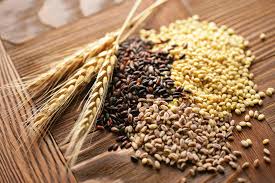blog - diversifying
Diversifying Your Investments
 When I refer to diversifying your investments, I’m not talking about stocks and bonds, but rather truly tangible items that hold real value to those who own and have them in their possession. Expanding on the three-B’s phrase that James Wesley Rawles so aptly coined, I’m referring to items such as “beans, bullets and band-aids.” For the purpose of this article, I’m going to focus on just one of these three important tangle resources, the “beans.” While having an ample supply of quality resources in the other two categories is equally important, the ability to feed yourself, your family and those in your community is vital.
When I refer to diversifying your investments, I’m not talking about stocks and bonds, but rather truly tangible items that hold real value to those who own and have them in their possession. Expanding on the three-B’s phrase that James Wesley Rawles so aptly coined, I’m referring to items such as “beans, bullets and band-aids.” For the purpose of this article, I’m going to focus on just one of these three important tangle resources, the “beans.” While having an ample supply of quality resources in the other two categories is equally important, the ability to feed yourself, your family and those in your community is vital.
Under the present circumstances, each person must continue to walk the fine line of balancing the need to maintain enough cash on hand to pay their monthly expenses (since losing your home and/or property to foreclosure is not a good approach to living a preparedness lifestyle), while also investing in tangible resources that can help sustain them through a significant economic, social and/or political crisis. So, let’s talk about the types of investments that have real value inherent within the items themselves, which in this case will be food that you can store and/or grow.
The tangible category of “beans,” otherwise known as food, can easily be divided into a number of subcategories. Such subcategories can include stored foods (such as dried, canned or frozen goods), fresh foods (such as root cellar items or those being actively grown), and food on the hoof (such as livestock). Striving to maintain a rotating inventory of stored foods in quantities sufficient to feed your family for a year is an excellent starting point. However, most stored foods represent one time use items that are consumed and then gone. When considering which types of foods to store and the methods of storage to utilize, plan to incorporate whole grains (such as dried corn, wheat, oats, lentils, quinoa, sorghum, beans, rice, etc.) as an important part of your stored food supply. Not only will whole grains keep longer than those that have been cracked or otherwise ground, but they can also be used as seeds for planting a new crop to grow larger quantities of fresh food. While the germination rate of dried whole grains will typically be lower than those sold specifically as seed for planting, the dual purpose capability and lower cost make it a worthwhile investment. In order for this to be a viable option, it is important to select whole grains (seeds) that are non-GMO, non-hybrid, open pollinated, and if possible, heirloom varieties. This will provide seed stock that will breed true and provide offspring that are consistent with the parent plants, producing consistent traits generation after generation. Select whole grains that are of a plant family and variety that have traits capable of growing in your specific regional climate. Also, consider whole grains that can be used to feed not only your family, but any livestock that you have or intend to raise.
In addition to investing in whole grains that have been properly stored to protect them from sunlight, moisture and oxygen, invest in a supply of seeds specifically sold and packaged for use in growing new crops. As with the whole grains, select seeds that are non-GMO, non-hybrid, open pollinated, and if possible, heirloom varieties. Choose a variety of grains, vegetables and fruit seeds that not only are suitable for your local conditions, but that also offer a variety of nutrient types. When considering the quantity of seeds to purchase and store, estimate the number of seeds needed to growth a full year supply of crops to feed your family and your livestock. Now double that number in order to have enough seeds for two years of crops. This will provide an insurance policy should a crop be lost due to drought, disease, pestilence, frost, fire or some other cause. It is also a good idea to include approximately twenty percent of extra seed for each year in order to have surplus crops for use in harvesting as seeds for planting the next year. In addition, it is a good idea to factor in another fifteen percent of additional seed to overcome loss due to diminishing germination rates that will occur as the seed becomes older.
Another great way to diversify your investment in tangible food items is to establish a garden of perennial fruit, nut and vegetable plants. While purchasing trees, shrubs and starter plants can be more of an initial investment than purchasing whole grains or seeds, investing in these perennial plants can provide a crop year after year. The value of having a garden that can provide fresh produce each year without the need to reseed will be almost immeasurable should outside food sources become unavailable or too costly. Plus, the more well established and mature your perennial garden becomes over time, the more food it will provide. While traditional orchards and row crops of perennial plants are an asset, consider the more space efficient approach of an edible forest garden or food forest. These densely planted gardens take advantage of companion planting relationships, require less weeding and less watering. As with whole grains and seeds, when deciding which types of perennial plants to invest in consider providing a diversity of nutrients and select varieties that are suitable for your family and your livestock.
By observing the current national and global conditions, it is evident that the ability to access and/or afford food from the grocery store may no longer be a viable option at some point in the not too distant future. As the value of the dollar continues to diminish, so will its buying power. And since you can’t eat stocks or bonds, investing more in your personal food supply is likely to be a better long term investment than your 401k.
Helping you achieve a life of liberty.

© 2023 Strategic Landscape Design
